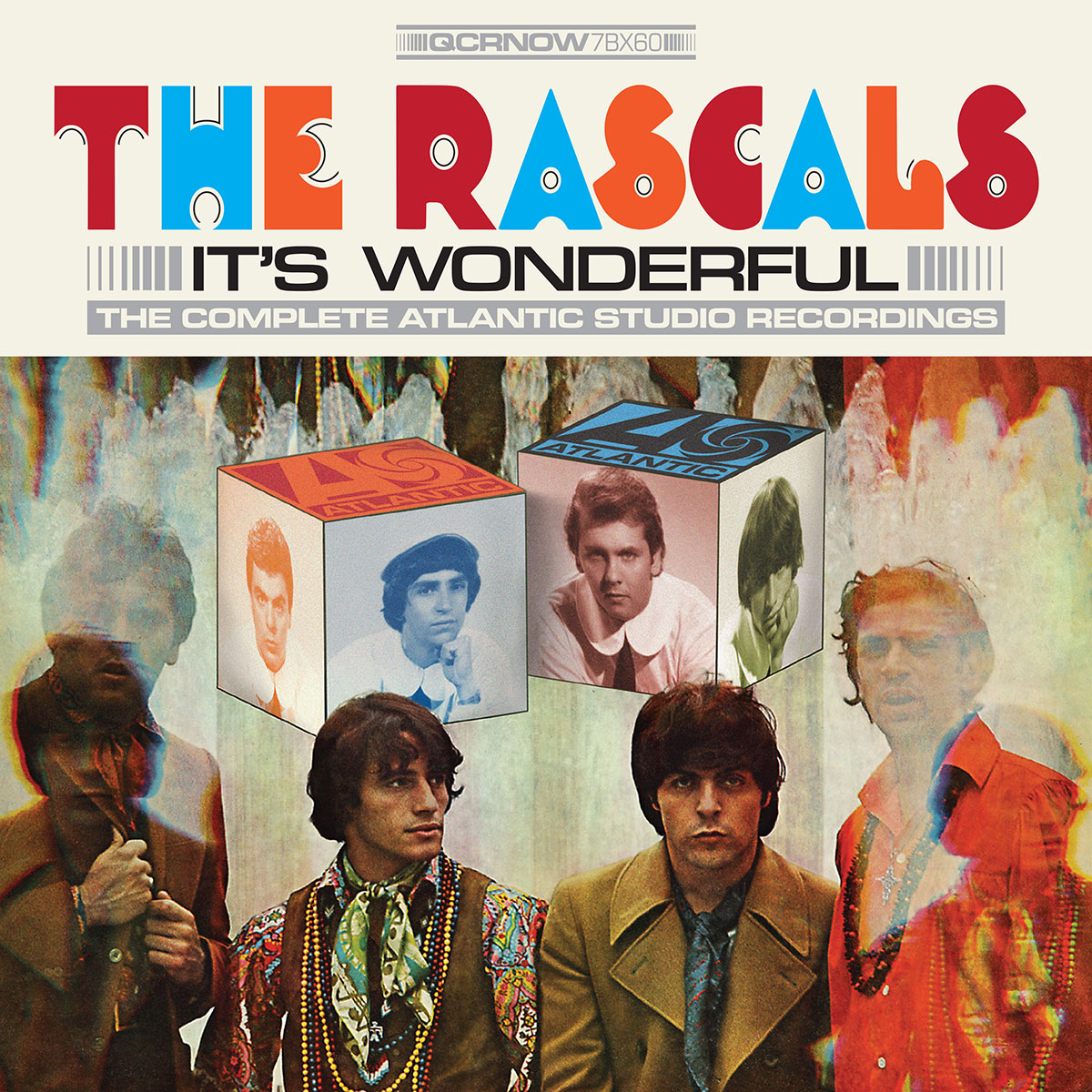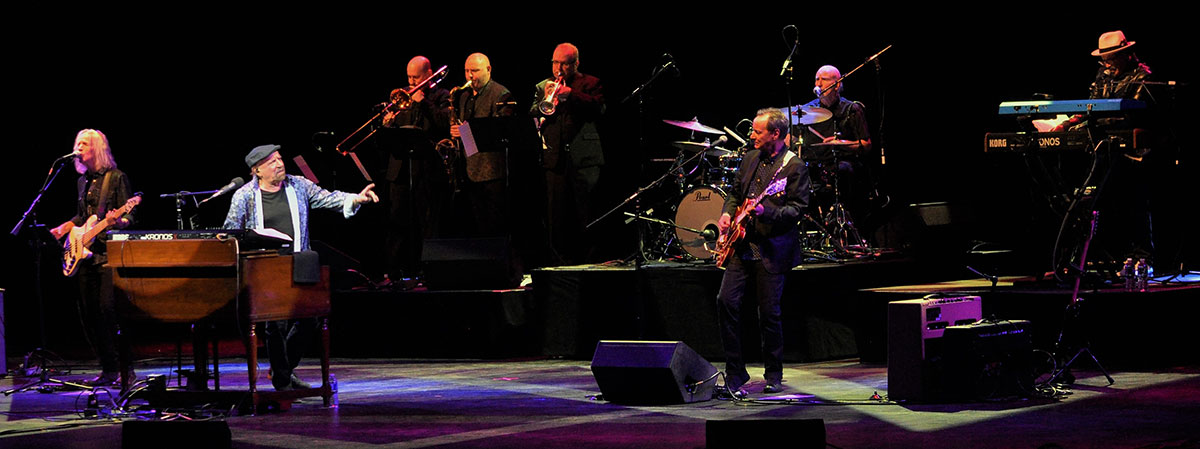
There was a buzz in the air in eastern Long Island in 1965. The British Invasion that exploded the popularity of rock music was still in its infancy, and the talk of the town in the Hamptons was an American band with Beatles haircuts. They played next to the sand dunes on a barge docked at Dune Road, a narrow strip of land between the Atlantic Ocean and huge Shinnecock Bay.
The Young Rascals tore it up on the bay side in East Quogue, and young people couldn’t get enough of them. All the elements were just right for attracting hordes of teenagers and 20-somethings. The drinking age was 18, it was summer break, Beatlemania was sweeping the universe and it was not just any fledging rock and roll band attracting concertgoers and partiers escaping from New York City and beaching in nearby Hampton Bays. The Young Rascals not only rocked with abandon but, with no Black musicians or singers in the band, incorporated plenty of soul into their songs. They would soon hit the charts with hit song after hit song and become simply the Rascals.
“They played at the Barge from May through September 1965,” says Rascals historian Joe Russo, who contributed photos and information for the new 7-CD box set The Rascals It’s Wonderful on England’s Cherry Red Records. “The Barge meant everything to them. It’s where they were discovered and received major press. Their management became aware of them from their stint there, which led to their record deal with Atlantic.”
At age 11, I was too young to get into the Barge, but I was quite aware of the stir caused by the Young Rascals and rock and roll. The WMCA Good Guys were blaring the new music — despised by our parents — on AM radio; my late-teen brothers were collecting records by all kinds of young musicians and groups I had never heard of, and Dune Road was congested with cars with the Young Rascals on their compass.
“They had it all,” Russo says. “They were great singers with great original material. They were masters of making covers their own; they were beyond spectacular as a live act; they had one of the greatest drummers in music, and they were uplifting and inspiring as people. They never conveyed negativity and were positive role models for the youth.”
The Young Rascals and then the Rascals were comprised of keyboardist and singer Felix Cavaliere, singer Eddie Brigati, guitarist Gene Cornish and drummer Dino Danelli. Danelli died in December 2022. Cavaliere and Cornish are currently touring as the Rascals.
The new box set is comprised of 152 remastered songs — the Rascals’ entire 1965-71 output for Atlantic Records before the group broke up. The band’s first four albums are presented in stereo and mono, and there are songs released as singles and in foreign languages.

“I always enjoy when a product comes out, because it increases awareness of our work,” Cavaliere tells me about the new release.
Steve Stanley, the president of Now Sounds, a reissue label that put together the box set for Cherry Red, hopes that the release “will put a spotlight on the Rascals’ catalog in a way that hasn’t happened before.” More than a dozen outtakes in the box are previously unreleased, he says.
I ask Stanley, a music historian who transferred some of the master tapes for the project, to explain the Rascals place in rock and roll history.
“Although their tenure and output was not as prolific as the Stones or the Beatles, their albums stand on their own 50-plus years later,” Stanley says. “The unfortunate thing is they’re primarily known as a singles band, even though they made great efforts to explore the possibilities of the long-playing record. ’60s music doesn’t get much more adventurous than Once Upon a Dream!”
That was the Rascals’ fourth album, released in 1968, and included the song “It’s Wonderful,” which reached No. 20 on the Billboard chart. The group had many other Top 40 hits: “You Better Run,” No. 20 in 1966; “(I’ve Been) Lonely Too Long,” No. 16 in 1967; “Groovin’, No. 1 in 1967; “A Girl Like You,” No. 10 in 1967; “How Can I Be Sure,” No. 4 in 1967; “A Beautiful Morning,” No. 3 in 1968, and “People Got to Be Free,” No. 1 in 1968.
Groovin’ was also the title of the 1967 album, and it was one of the first albums Stanley remembers hearing as a kid growing up in Oklahoma City.
“Naturally, I loved the cover too,” he says about the cover, a cartoonish illustration of the band members. “I remember wondering if this band had their own cartoon show. Song for song, it’s just such a durable classic LP of that era — one that inexplicably never makes it on top 10 lists. I know that perhaps Groovin’ wasn’t initially conceived as an album, with several of the tracks previously released. But like other landmark albums of that era — Simon & Garfunkel’s Bookends, the Beatles’ Magical Mystery Tour and the Rolling Stones’ Flowers) — this can accidentally lead to something just as brilliant.”
Despite the album’s brilliance and the many Top 40 hits, this columnist believes the Rascals — probably because of the band’s short life — never received the credit they deserve for helping shape rock ‘n’ roll. So, I ask Cavaliere his thoughts.
“That’s probably our own fault,” he responds. “We did a lot of things wrong. Except the music.”
Ah, yes, the glorious music. Mark Deming of AllMusic probably provides the best summation.
“At their best, the Rascals fused the soulful passion of R&B, the tough, swaggering sound of garage rock, the chops of a top-notch show band and a sense of musical adventure that borrowed from pop, jazz, funk, gospel and World Music,” Deming writes at AllMusic.com. “Beginning as the Young Rascals, they were a band of brash upstarts from the East Coast who on their debut album merged rock and soul with a skill and feel that was revolutionary, and with 1967’s Groovin’, they expanded their range to embrace psychedelia and arty pop. As the ’60s gave way to the ’70s and keyboard player Felix Cavaliere’s leadership of the group became stronger, they advanced from ambitious, genre-spanning sets like 1969’s Freedom Suite to the jazzy explorations of 1971’s Peaceful World and the funk accents of 1972’s The Island of Real.”

Of all the songs on the new box set, I ask Cavaliere which one is his favorite. He says it’s a tough question before answering “People Got to Be Free” and “A Ray of Hope.”
“People Got to Be Free,” which was first released as a single, stayed No. 1 on the Billboard chart for five weeks and sold more than 4 million copies worldwide. The song and “A Ray of Hope” were written by Cavaliere and Brigati and are on the Freedom Suite double album.
Of all Rascals albums, Cavaliere tells me that Freedom Suite means the most to him. It is “my pet,” he says. The album has one record with 11 relatively conventional Rascals songs, and then the three-song second record takes off in various directions — jazz, a 14-minute Danelli drum solo and jams. Of course, there is also blue-eyed soul, some funk and plenty of rock and roll.
After the Rascals broke up in the early 1970s, they didn’t get back together until 2013. Steven Van Zandt, a Rascals fan and a member of Bruce Springsteen’s E Street Band, reunited the four original members for Once Upon a Dream, a hybrid theatrical event that played on Broadway and toured the country. The show was a concert and, between songs, the audience watched historic taped video of the band and actors’ recreations of events in the band’s history.
Cavaliere told me years ago that the best concert he ever attended as a spectator was Michael Jackson at the Hartford Civic Center in Connecticut in the early 1980s. “Michael Jackson sang his tail off and danced his tail off,” Cavalieri said. “Not too many people can entertain like that.”
Another concert the Rascals attended on August 15, 1965, is etched into the memory of Cavaliere, Brigati and Cornish. They were guests inside a dugout at Shea Stadium — the home field of the New York Mets — waiting for the Beatles to take the stage in front of 55,000 screaming fans. The scoreboard announced that “The Young Rascals Are Coming,” and Beatles manager Brian Epstein angrily demanded that the words must be taken down, or the Beatles would not perform.
The Rascals, though, may have gotten the last laugh: Some Rascals songs and albums outsold the Beatles. The Rascals were inducted into the Rock & Roll Hall of Fame along with some heady company — Crosby, Stills & Nash, Buffalo Springfield, the Bee Gees, the Jackson 5, Joni Mitchell, Bill Monroe and Mahalia Jackson.
In the Rascals’ induction speech, Steven Van Zandt said it was about time that the band had “finally” been inducted. That speech was delivered in 1997 — 32 years after the fledgling band took off at the Barge on the shores of the Hamptons. And now, 59 years after the Rascals’ legendary Barge stint, the world finally has a new box set with all of the Rascals’ Atlantic recordings.
